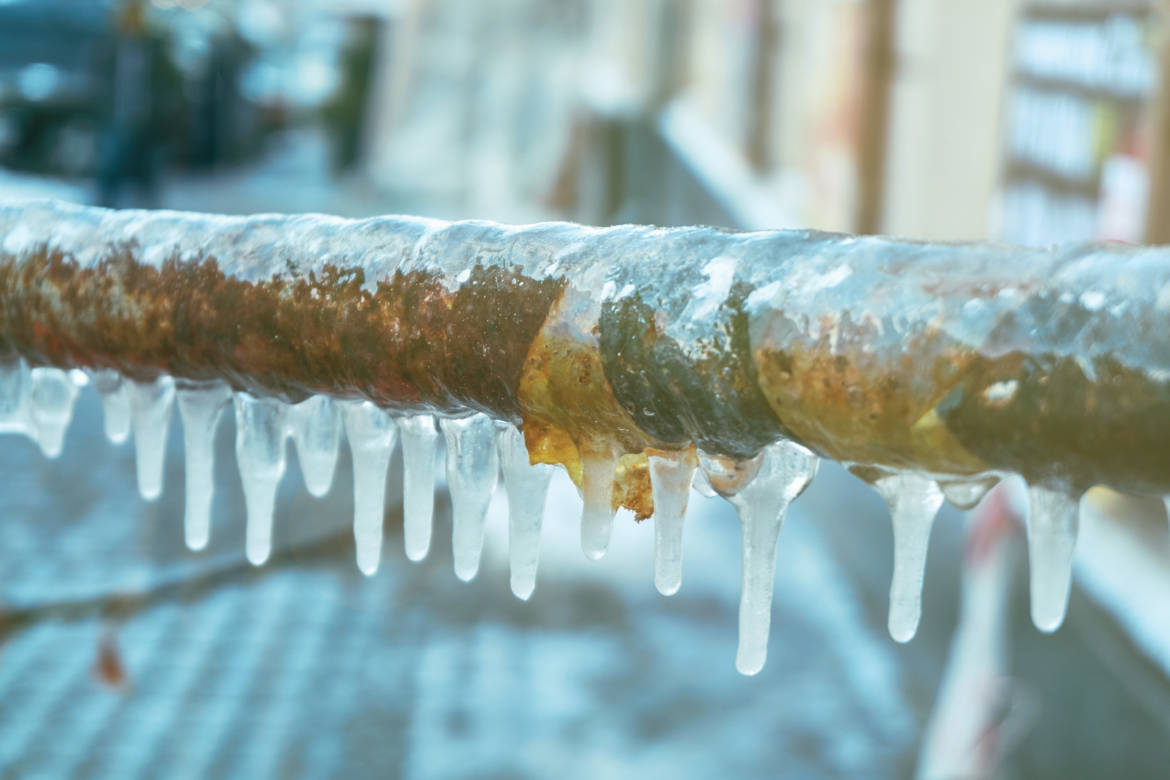We've found this post relating to Winter Plumbing Precautions: Preventing Frozen Pipes listed below on the web and felt it made good sense to write about it with you on my blog.

Winter can wreak havoc on your pipes, especially by freezing pipelines. Right here's exactly how to avoid it from occurring and what to do if it does.
Intro
As temperature levels decrease, the risk of frozen pipes increases, potentially leading to expensive repairs and water damages. Comprehending how to avoid frozen pipes is important for property owners in cool environments.
Prevention Tips
Shielding prone pipes
Cover pipes in insulation sleeves or make use of heat tape to safeguard them from freezing temperature levels. Focus on pipes in unheated or outside locations of the home.
Heating techniques
Maintain indoor spaces properly warmed, specifically areas with pipes. Open cupboard doors to enable cozy air to flow around pipes under sinks.
Just how to recognize frozen pipelines
Search for lowered water flow from faucets, uncommon smells or noises from pipes, and noticeable frost on revealed pipelines.
Long-Term Solutions
Structural changes
Think about rerouting pipelines far from exterior walls or unheated locations. Include extra insulation to attics, basements, and crawl spaces.
Upgrading insulation
Purchase top quality insulation for pipelines, attic rooms, and wall surfaces. Appropriate insulation assists keep regular temperature levels and decreases the danger of icy pipelines.
Securing Exterior Plumbing
Garden pipes and outside faucets
Disconnect and drain pipes garden hoses prior to winter months. Set up frost-proof faucets or cover outside taps with protected caps.
Understanding Frozen Pipelines
What creates pipelines to freeze?
Pipes freeze when subjected to temperatures listed below 32 ° F (0 ° C) for extended durations. As water inside the pipelines ices up, it broadens, putting pressure on the pipe walls and potentially creating them to break.
Risks and problems
Frozen pipelines can bring about water interruptions, home damage, and costly fixings. Ruptured pipelines can flooding homes and cause comprehensive structural damage.
Indicators of Frozen Pipes
Identifying icy pipelines early can stop them from breaking.
What to Do If Your Pipes Freeze
Immediate activities to take
If you believe frozen pipelines, keep faucets open up to soothe pressure as the ice melts. Use a hairdryer or towels soaked in hot water to thaw pipes slowly.
Verdict
Stopping icy pipes calls for positive measures and fast feedbacks. By recognizing the causes, signs, and preventive measures, homeowners can secure their plumbing throughout winter.
6 Proven Ways to Prevent Frozen Pipes and Protect Your Home
Disconnect and Drain Garden Hoses
Before winter arrives, start by disconnecting your garden hoses and draining any remaining water. Close the shut-off valves that supply outdoor hose bibs and leave the outdoor faucet open to allow any residual water to drain. For extra protection, consider using faucet covers throughout the colder months. It’s also important to drain water from any sprinkler supply lines following the manufacturer’s directions.
Insulate Exposed Pipes
Insulating your pipes is an effective way to prevent freezing. Pipe insulation is readily available at home improvement stores and is relatively inexpensive. Pay close attention to pipes in unheated areas such as the attic, basement, crawl spaces, or garage. Apply foam insulation generously to create a buffer against the cold. You can also wrap your pipes in heat tape or thermostat-controlled heat cables for added warmth.
Seal Air Leaks
Inspect your home for any cracks or openings that could let in cold air. Seal any holes around the piping in interior or exterior walls, as well as the sill plates where your home rests on its foundation. Additionally, make sure to keep your garage door closed unless you’re entering or exiting. Leaving it open creates a significant air leak that can lead to frozen pipes.
Allow Warm Air Circulation
During cold snaps, it’s essential to allow warm air to circulate evenly throughout your home. Leave interior doors ajar to promote better airflow. Open kitchen and bathroom cabinets to help distribute heat consistently around the rooms. If you have small children or pets, be sure to remove any household chemicals or potentially harmful cleaners from open cabinets for safety.
Let Faucets Drip
A small trickle of water can make a big difference in preventing ice formation inside your pipes. When temperatures drop significantly, start a drip of water from all faucets served by exposed pipes. This continuous flow helps prevent the water from freezing. Additionally, running a few faucets slightly can relieve pressure inside the pipes, reducing the chances of a rupture if the water inside does freeze.
https://choateshvac.com/6-proven-ways-to-prevent-frozen-pipes-and-protect-your-home/

As a keen reader about 6 Ways to Prevent Frozen Pipes, I was thinking sharing that piece of content was beneficial. Please pause to share this blog post if you enjoyed reading it. I praise you for your time. Don't hesitate to come by our blog back soon.
Need Help? Hire Us Now!
Comments on “Important Advice for Avoiding Frozen Plumbing in Cold Weather Conditions”